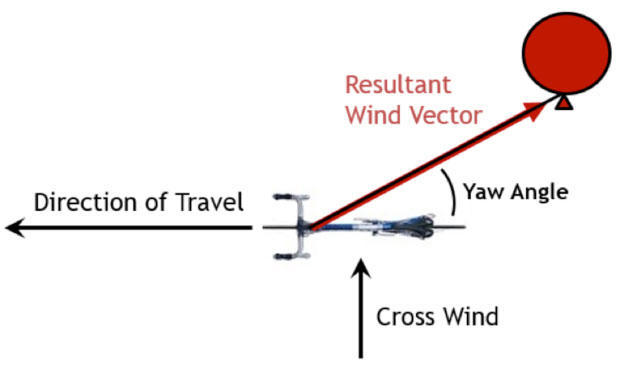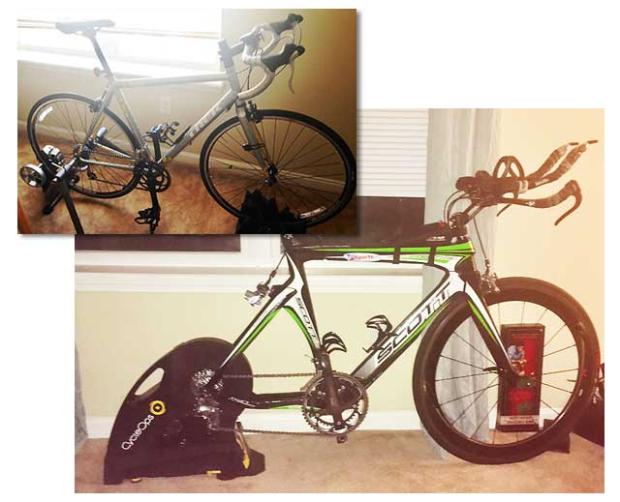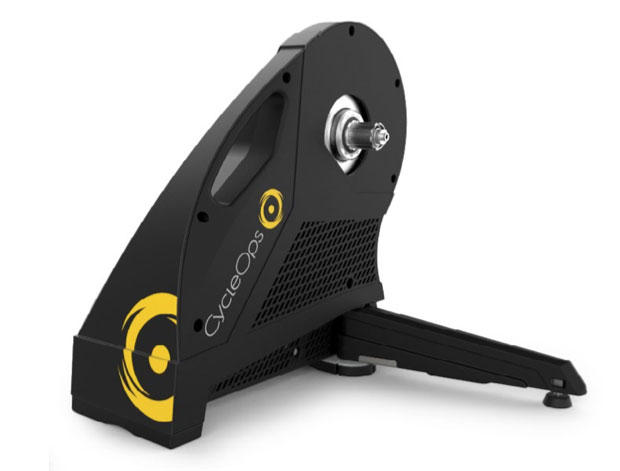Elite Direto
In a tough market dominated by Wahoo, Tacx, and CycleOps, the Elite Direto is not the most feature-rich, nor the quietest, nor perhaps the smoothest, but it is certainly a bang-for- buck smart trainer finalist.
Technical Specifications
The Elite Direto delivers on the required imperatives for compatibility. It supports Ant+ and FE-C, and BTLE 4.0, and is compatible with nearly every bike frame on the market, including those with thru axles, and with dropout widths of 130mm, 135mm, 142 x 12mm, and supports 9/10/11 speed cassettes by SRAM, Shimano, and Campagnolo (with adapter).
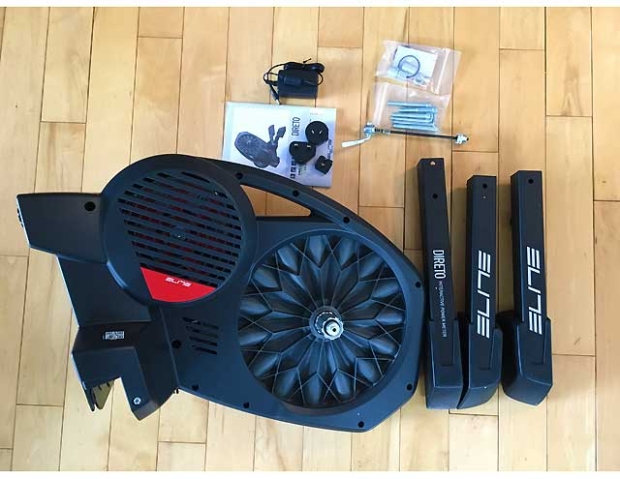
The Direto uses a 5-foot power cord with a thin cable housing that plugs into the front of the trainer. The cord is noticeably short when compared to the 9.5-foot power cord that is standard with the Neo and Kickr and I have read of a couple cable cords being accidentally damaged that might not have been with a sturdier power cord. Without power, the Direto will deliver 200 watts of resistance.
The body of the Direto is constructed mostly of hard plastic, with an integrated handle, while the legs are hollowed steel and held in place via a nut-bolt system, instead of a spring based system found in most other direct drive smart trainers. The result is a trainer that weighs about 33 lbs, or 15lbs lighter than the Kickr or Neo.
The Direto does not come with a riser block; when attached to a TT style bike, the front end will have a drop of about 1.5 inches. You must provide your own cassette. The flywheel and cassette sit about 15mm from each other, and I didn’t have any clearance issues with rear derailleurs.
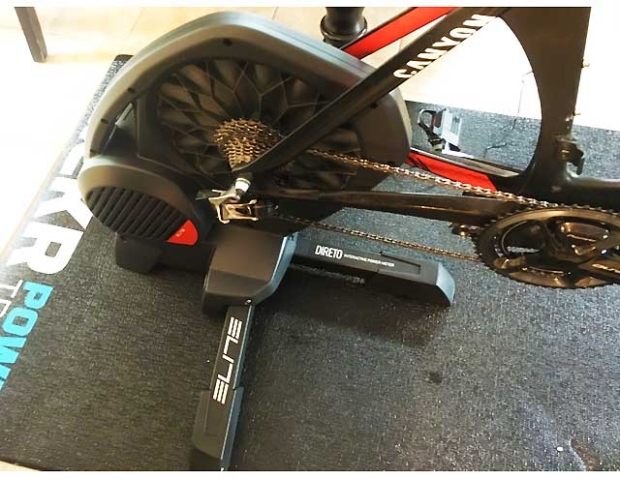
The Direto uses an Optical Torque Sensor power meter with a claimed accuracy of +/- 2.5% and can provide L/R power balance and other advanced pedaling metrics with the use of its external cadence sensor and Elite software. The Direto can simulate slopes up to 14 percent; a maximum power output at 40km/hr of 1400 Watts; and uses a 9.2lb flywheel. With the exception of the power metrics, the Direto specifications are considerably less when compared to the KICKR, Neo, or Hammer which boast 20% slopes, 2000 Watts, and 20lb flywheels.
Though the Direto comes up a bit short of its competitors, its decision to omit the gaudiest of überspecs may be a strategic win at the cash register. While a lighter flywheel may not deliver a ride quality the equal to flywheels considerably heavier, are you worried that you might max out a trainer with a 1400 watt upper limit? Or will ride a simulated route with inclines greater than 14 percent?
Getting Started
The Direto required very little assembly: Install the three legs with the supplied bolts and Allen key wrench, and slide on a cassette. As mentioned, the legs are not spring activated so they require tightening a bolt for the desired position. The three legs are not individually length adjustable, so this trainer is not optimized for use on uneven surfaces.
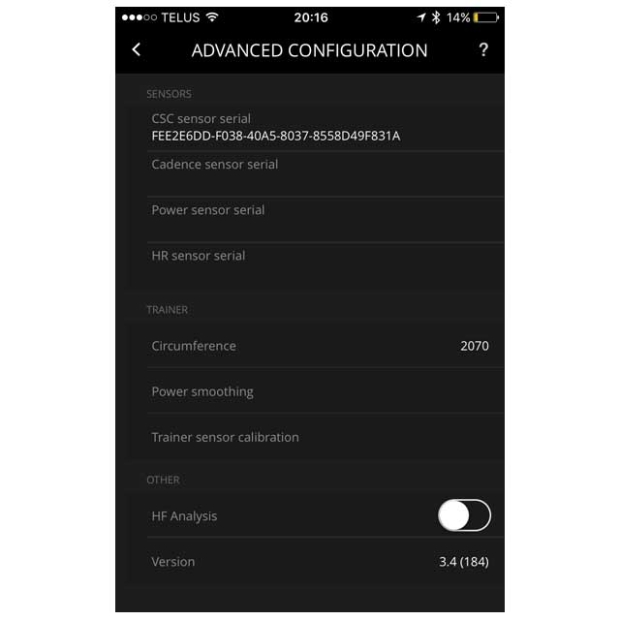
Once the Direto is powered-up there are three LED lights on the unit that indicate its status. At the initial start-up there are green- and blue-blinking LED’s: Blinking green means it’s awaiting a connection to Ant+ sensor; blinking blue means it’s looking for a BTLE to pair with. The red LED just means the unit is powered.
Once powered, I’d recommend pairing Elite’s free mobile training applications available in both iOS and Android. Although one should be able to do a spin down via other means (e.g. bike computer, Zwift), I found some early software glitches made this difficult and the best means was via their own application.
Software Testing
The Elite Direto is compatible with a bunch of training platforms and bike computers. I tested the Direto on TrainerRoad, Rouvy, Zwift, and its mobile application and it performed quite well. I did notice that the Direto is slower to react to changes in power or grade versus some of the other smart trainers and there is a hill on Zwift that is beyond its 14% maximum grade. To be fair, a user who is not testing on various other smart trainers on a regular basis probably wouldn’t even notice the difference in feel or smoothness but it is there nonetheless.
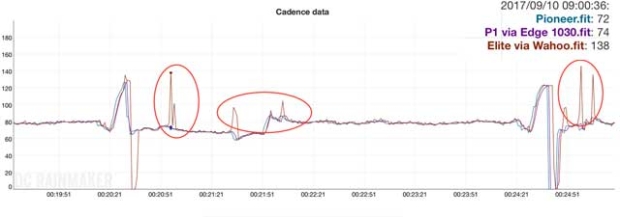
I did not have any problems recording data using Garmin devices (Fenix 5x and 520/1030) and Wahoo devices (Elemnt and Bolt). The Direto broadcasts power, cadence, and speed. There are some software glitches (see above) in speed and cadence recording for some bike computers (Elite says its working on these) but this does not appear to be affecting virtual racing platforms like Zwift.
Power, Sound, & Vibration Testing
In order to be consistent in testing indoor trainers, I have a dedicated workout for trainers. I test across a spectrum of wattages and intervals, trying to focus on the most common intervals (200, 250, 300 watts) and then throw in some hard efforts (1200 watts) and easy efforts (100 watts) where differences can be extreme.
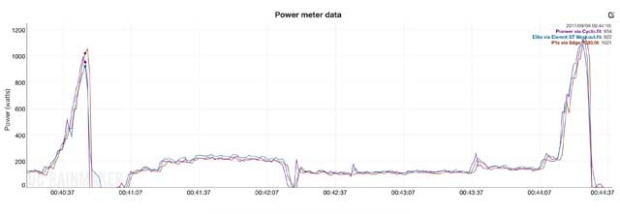
In this test, I tested against the PowerTap P1’s and the Pioneer power meter which have been the most consistent and are generally within a couple of watts of each other (Note: Pioneer averages 3-5 fewer watts than the P1 pedals at the same power output).
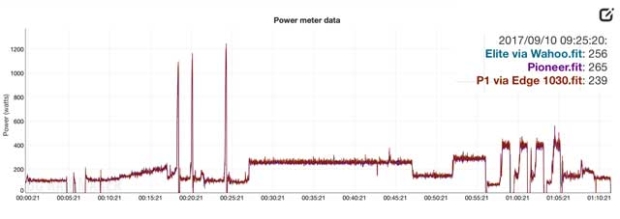
After a 20-minute warm up, I ran a spindown test on the Elite and zero offset for both the Pioneer and P1. The correlation of the results was extremely impressive, minus some cadence issues. In fact, although the Direto has a claimed accuracy at +/- 2.5%, I’d say that it is closer to +/- 1%.
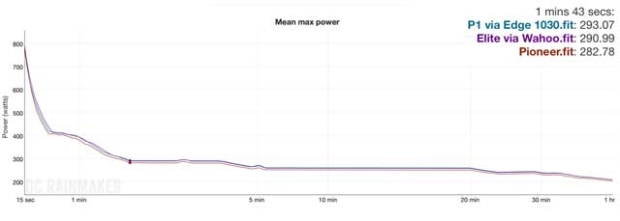
I also tested the sound made by the Elite Direto using the SPLnFFT application. I repeat the same test conditions for each trainer by riding at approximately 200 watts at a cadence of 75-80rpm on a freshly lubed drivetrain. The Elite tested 4db louder than the Tacx Neo, the same as the Wahoo Kickr, and 1db quieter than the CycleOps Hammer. However, under higher wattages (300+ watts), the Direto suddenly becomes the loudest of the group which is likely due to its open flywheel design.
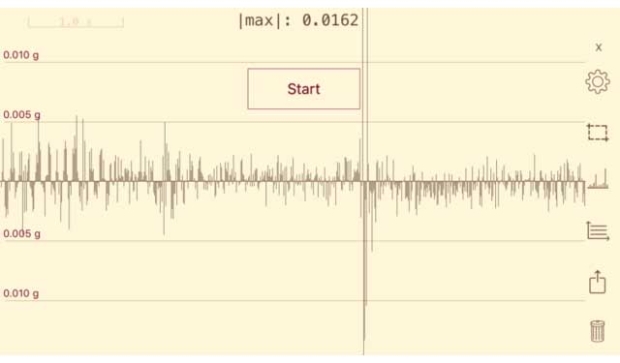
Vibration testing using produced similar results compared to other direct drive smart trainers with the same caveat for the Elite at higher wattages. The image above shows vibration at 200 watts using the Tacx Neo while the second image below is 200 watts using the Elite, both on a hardwood floors.
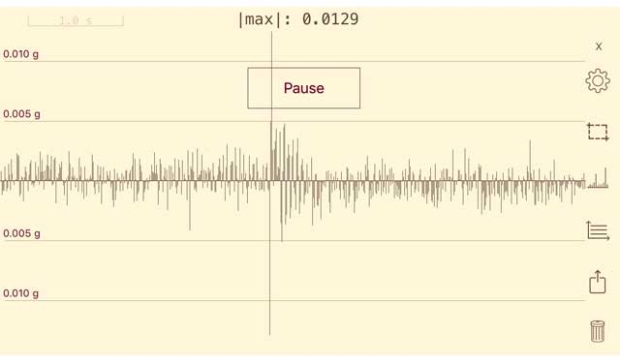
Final Thoughts
The Elite Direto may be the most practical direct trainer on the market. At a retail cost of $899, about $300 below the Kickr or Hammer, it provides equal or better power accuracy with the same bike and software compatibility. If you are not riding over 1400 watts and can settle for inclines of less than 14 percent, the Direto may be a financial win over the Kickr and Hammer.


